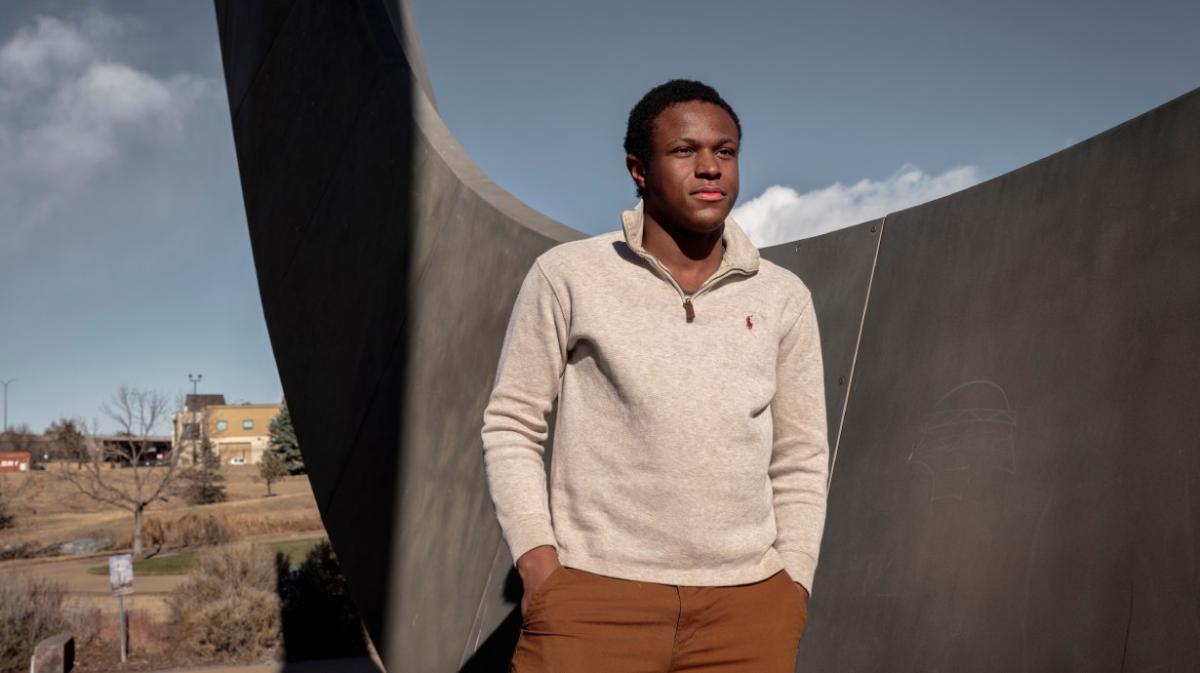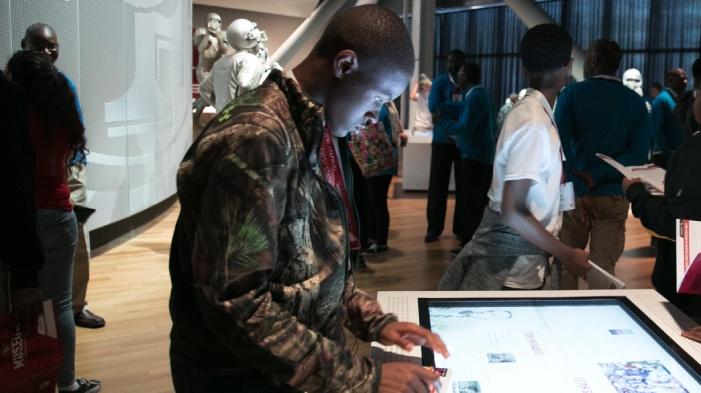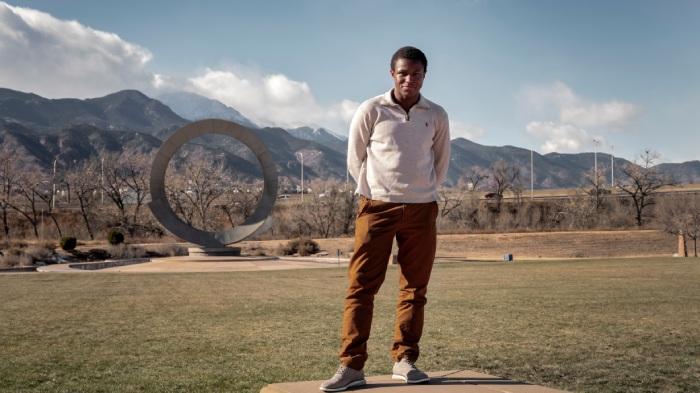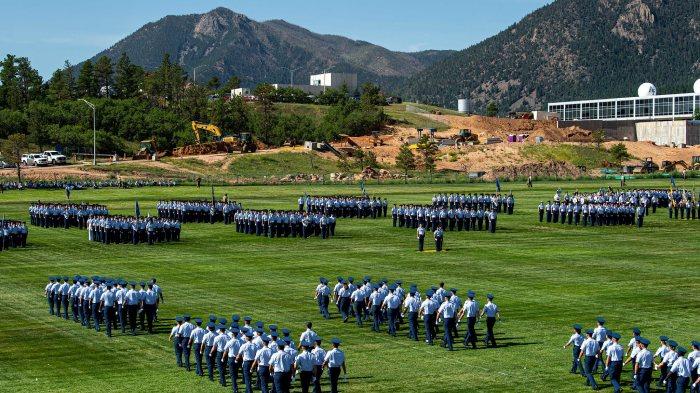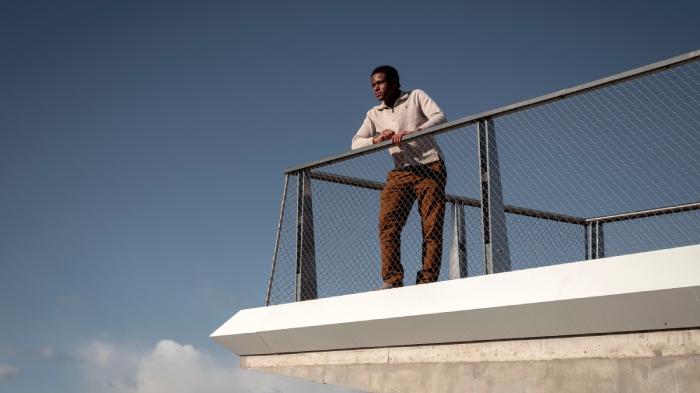How Early Exposure to STEM Led This Student to the U.S. Air Force Academy
Verizon Innovative Learning helped spark Ravion Lightfoot’s interest in science and tech
As a middle school student in Jackson, Mississippi, Ravion Lightfoot’s education went far beyond social studies and math. Over the course of two summers, starting in 2016, Lightfoot participated in the Verizon Innovative Learning summer program at Jackson State University, where he learned HTML coding for websites, explored the intricacies of computer-aided design (CAD) and was introduced to drone technology. He says this hands-on experience with next-gen tech influenced his current career path and continued interest in STEM. “I was interested in AI and the ‘simple’ logic connected to coding,” Lightfoot says. “Before the program, I definitely didn’t know about other career possibilities in STEM. It 100% helped my path up to now.”
Fast forward to today, and Lightfoot, 19, is a cadet at the U.S. Air Force Academy in Colorado Springs, Colorado. He is majoring in behavioral science, with plans to get his master’s degree in management or computer science.
For Lightfoot, the Verizon Innovative Learning program was the catalyst that sparked his interest in STEM. The program aims to empower middle school students in under-resourced communities to explore STEM subjects, learn problem-solving skills and gain exposure to career opportunities in technology fields. “The program was a nice environment for kids to do something at that age,” Lightfoot says. “We had a lot of exposure.”
Charles Moore, who serves as the instructor for Jackson State’s Verizon Innovative Learning program, has been with the program since its inception in 2015 and remembers Lightfoot as an advanced student who was hardworking and disciplined. “Ravion was a very focused student, and he enjoyed thinking outside the box,” he says. “He was very creative, and he loved soccer, too.”
Lightfoot’s favorite part of the Verizon program was attending a three-day summit in San Francisco, where he and about 100 other students saw real-world applications of what they were learning. During the trip, Lightfoot and the other students toured the Verizon Innovation Lab and saw how STEM is used at a film and TV production company, among other STEM-focused activities.
“At the Verizon Innovation Lab, it was pretty cool seeing a robot balance a ball; it was showing future ideas,” Lightfoot says. “We also saw the difference in internet speeds—3G, 4G and 5G. At the end of the trip, they gave us time to go out and explore. It was nice having the freedom to experience that at that age.”
After Verizon Innovative Learning, Lightfoot got more involved in other STEM camps, thanks to the support and encouragement of his family and family friends. “My family kept putting me and my cousin [who also attended the Verizon program] into different programs. That gave me early exposure to STEM and helped me stay interested in it after middle school,” he says. “My family is very excited about what I’m doing now at the Academy.”
In high school, Lightfoot continued his STEM journey through various activities, joining a robotics club and competing in the C Spire Coding Challenge. His dedication was recognized with a $40,000 scholarship from a major tech company for students pursuing computer science or engineering. “I’m pretty tech savvy,” he says. “My tech experience sets me apart.”
Lightfoot’s academic success sets him apart as well. In addition to being a strong student, Junior ROTC cadet, active volunteer and athlete in high school, Lightfoot earned two Gold Keys—the top award—for his art submissions in the Scholastic Art Awards. He also received offers of appointment from the Merchant Marine Academy, the Naval Academy Preparatory School and West Point, though he says he was “most excited” about joining the Air Force Academy.
“I came into the Academy wanting to be a pilot,” he says. “I’d been interested in aviation and planes since I was younger.”
This interest began after Lightfoot participated in an after-school club where we got his first chance to fly. The students were introduced to fields such as art and music, and when they got the opportunity to take flight with local pilots, Lightfoot realized how much he enjoyed it.
“There was an inexplicable sense of joy, excitement and adrenaline when I got up in the air,” he explains. His interest was so apparent that the program leader connected Lightfoot with one of the pilots so he could work toward getting his private pilot’s license.
When it comes to his current time in the Academy, Lightfoot says one of his favorite parts is the people. “From the military personnel to civilians—they possess a breadth of high-quality information and life experience that they are more than willing to pass down.”
As for his future, Lightfoot is exploring the options that an Air Force education will grant him, whether that’s becoming a pilot, working in cybersecurity or considering a career with Space Force, the military branch dedicated to protecting U.S. and allied interests in space. “Overall, I’m not sure yet,” he says. “The job’s not finished, although, to a fault, I don’t really pay attention to the small wins. I’m more focused on the big win of graduating and commissioning.”
Whatever he decides, Lightfoot’s future looks bright. As for advice for younger people hoping to follow in his footsteps, Lightfoot encourages them to take advantage of any opportunity they have to learn about STEM as he did with the Verizon Innovative Learning summer program. “It’s good to have early exposure to STEM fields,” Lightfoot says. “If that’s something you’re interested in, explore it whenever you can.”
Disclaimer: The appearance of Department of Defense personnel does not imply or constitute DOD endorsement. The Department of Defense [nor a respective Military Service or any other DOD Component] does not approve, endorse, or authorize this company, its products or services.

